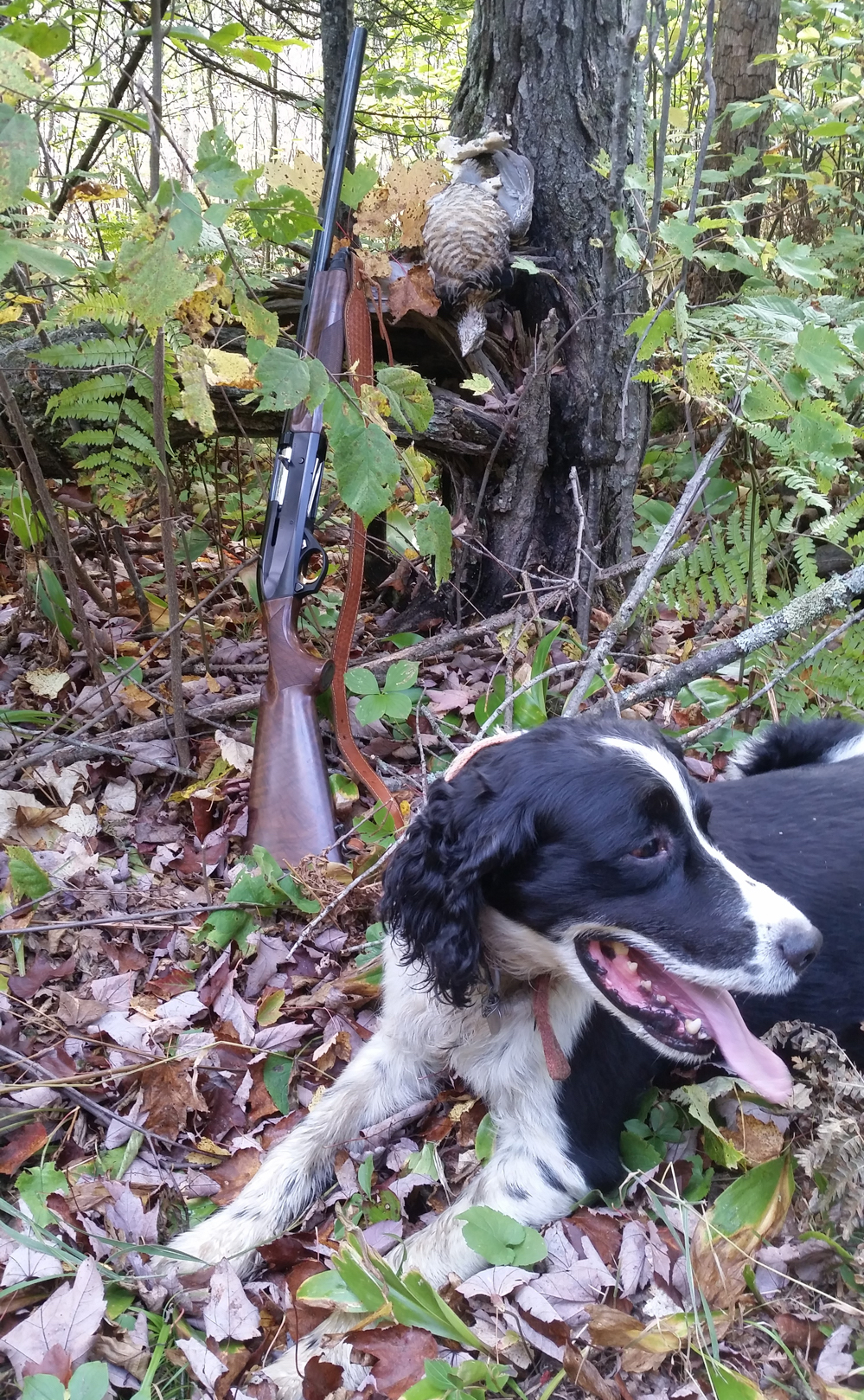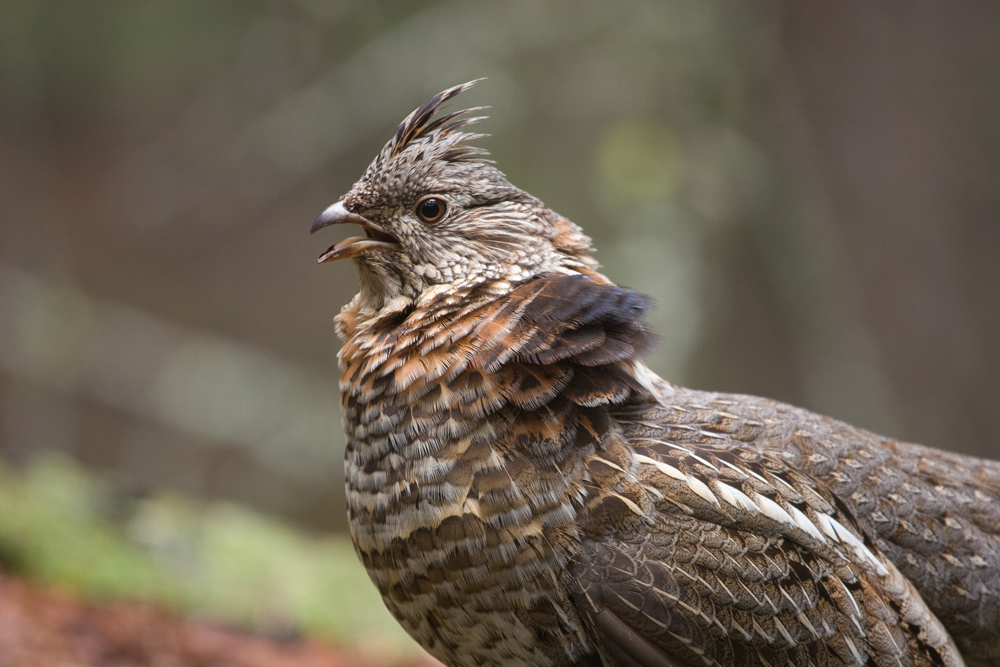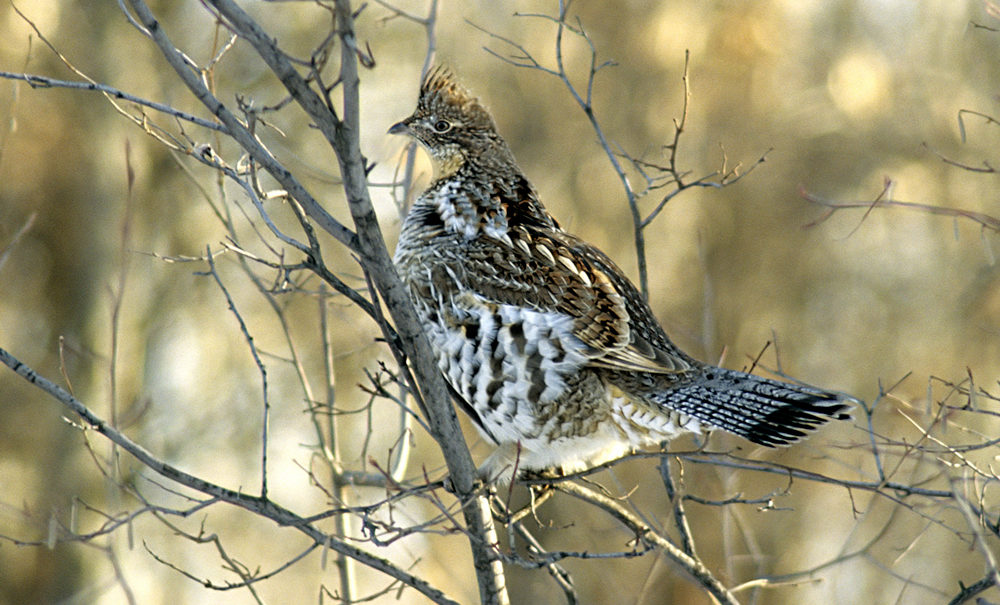Grouse opener in northern Minnesota (September 16) is usually a walk in the park. No, it isn’t easy; it’s just that there is usually little shooting because the brush and leaves are so thick you can’t see the birds. The hunt usually ends up just being a good excuse for a walk through the beautiful, early autumn woods. I’ll take it.
I came up to camp southwest of Duluth the night before to get out of the Twin Cities, relax, and plant three Norway or red pines a local forest-product company gave away at a recent county fair. (Norways are an iconic tree of the North Country.) I also checked on a fenced-tree planting from a few years ago deep in a clearcut that’s now grown up these last four years. The planting included two white pines—another Minnesota icon—and two crab apple trees. The fence was collapsed on one end, and one of the three-foot white pines was snapped at the base. It’s clear a black bear had tried to get at the fruit-laden crab apples, which it didn’t—the fruit was still on the tree. Once the trees are large enough to survive some deer browsing, I’ll remove the fence so the grouse, and bears, can enjoy a snack.
Morning dawned early the next day, and my springer Hunter and I headed out on the trails a buddy and I cut a few weeks before. Hunter flushed a woodcock not five yards out, but nothing doing, as the season on them didn’t open for another week.

Walking through the woods with a good dog is reward enough, but a bird in the hand makes a hunt even sweeter.
Along an edge between an aspen stand and tag alder thicket Hunter flushed a ruffed grouse, but as usual I didn’t see the bird, and off it went. I’ll name this spot “No Chance Covert” because I’ve flushed a bird there every year and never had a shot. The intertwining tag alders are just too thick and tall.
We crossed into a neighbor’s land where I have permission to hunt. I let him hunt deer on my land, where last year his granddaughter got a small buck. Good trade. We flushed four more woodcock and two grouse, but as usual I didn’t have a shot. I did “bag” the sight of some red and sugar maples starting to turn red and orange, some aspens showing gold, and the best thing of all . . . some peace and quiet. Sometimes I savor hunting alone.
About a mile out, Hunter and I started for camp past the Oak Covert. This spot always has grouse, but they are hard to get. The covert is distinguished by several tall and wide-branching oaks on a high spot surrounded by thick brush on one side, an impenetrable tag alder swamp below the hilltop, and equally dense, ten-year-old aspens spreading south. Hunter pushed in and immediately flushed a grouse just off the trail, which I briefly spotted as it flew into the forest. He barked and came back to me, urging me to join in the chase. I stepped into the forest toward the giant oaks, scanning the branches intently, as grouse often land in trees when flushed. Again Hunter flushed the bird from somewhere, but I never saw it.
I got back on the trail, but Hunter remained in the forest and on the prowl. Not 20 yards down the trail he flushed another (the same?) grouse, which, much to my delight, flew straight down the trail ahead of me not ten yards out. My dog had found me a bone.
Now, “straightaways” aren’t gimme shots, but in the clear of a trail you won’t get a much better chance in early season to pot a ruffie. You have to aim tight on such shots, even when packing a skeet choke, as the birds are often close.
The grouse banked a tad left when I fired, but the pattern caught him good on the right side and down he came. Hunter was soon on top of him, bringing him to hand. It was a young bird, owing to its pale head feathers and slightly underdeveloped fan. He would be good eating.

Grouse & Wild Rice Soup
Back at home, I butchered the bird, including the legs, drizzled on some teriyaki sauce, and let him sit in the fridge for two days. Then after work I put him in a small Crock-Pot with three cups of water, three chicken bouillon cubes, a handful of wild rice I harvested not a mile from where the bird dropped, a diced green pepper, and half an onion. Three hours later I boned the bird, diced the meat, added some garlic powder and a sprinkle of hot pepper, and enjoyed my first wild game meal of the upland bird season.
It’s nice to know a man can still live off the land these days, and live well at that.




